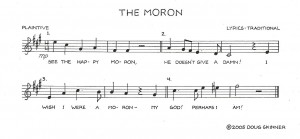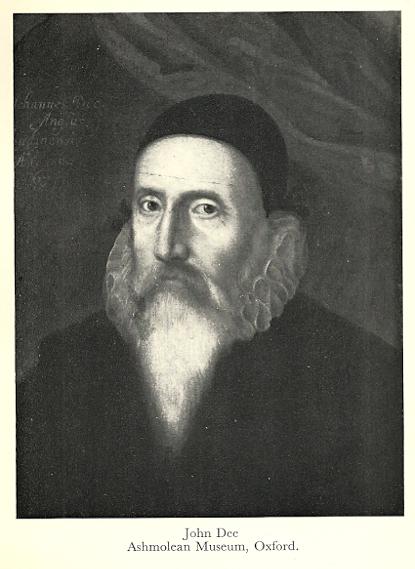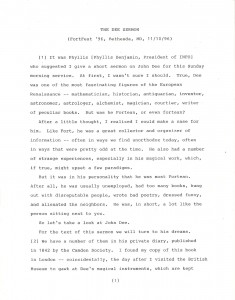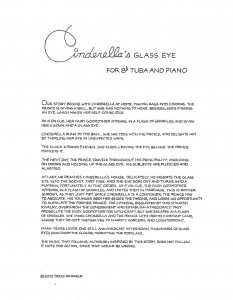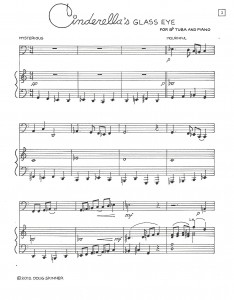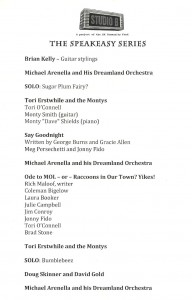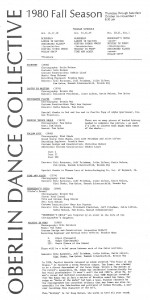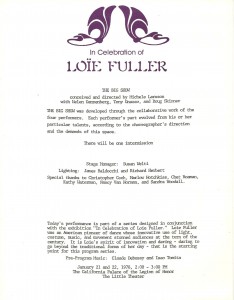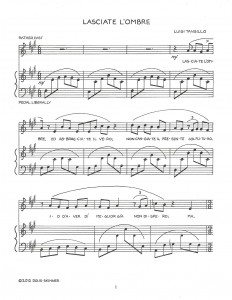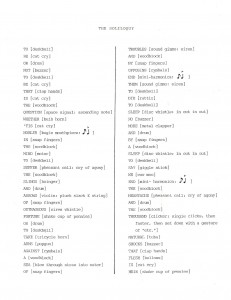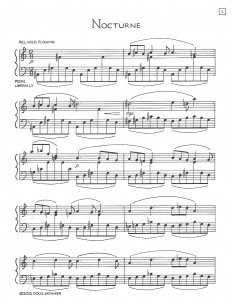A melancholy round, based on a traditional quatrain.
The Moron
April 16th, 2012 · Comments Off on The Moron
Comments Off on The MoronTags: *Music · M
The Dee Sermon
April 16th, 2012 · Comments Off on The Dee Sermon
For the 1996 FortFest, the annual gathering of the International Fortean Organization, I delivered a talk on John Dee, that intriguing Elizabethan polymath. I had already composed and performed a song cycle based on Dee’s dream diary; so when Phyllis Benjamin, the head of INFO, suggested a Dee talk, I took his dreams as a framing device. Each dream generated a mock interpretation, which then bloomed into a consideration of one part of his life.
Here’s the first page:
Comments Off on The Dee SermonTags: *Words · D
Cinderella’s Glass Eye
April 12th, 2012 · Comments Off on Cinderella’s Glass Eye
“Cinderella’s Glass Eye” is a bit of fairy tale music, scored for tuba and piano. There is a story to go with it; here it is. (Some readers have complained that the images are too small; let me remind them, gently, that you can enlarge a thumbnail by clicking on it.)
And here’s the brooding counterpoint that begins it, before the waltz.
Comments Off on Cinderella’s Glass EyeTags: *Music · *Words · C
The Speakeasy Series
April 11th, 2012 · Comments Off on The Speakeasy Series
David Gold and I performed in “The Speakeasy Series,” produced by Studio B in Maplewood, NJ, March 24, 2012.
Our set:
Make a Wish
Never Shtup a Nutjob
Fa La La La La
The Gypsy (by Billy Reid)
Don’t Talk To Me
Good Night
Comments Off on The Speakeasy SeriesTags: *Music · *Stage · S
Blunders
April 11th, 2012 · Comments Off on Blunders
I wrote the score for Katie Nelson’s dance “Blunders” back in 1980. Frankie Mann recorded it; I played all the instruments, including piano, toy piano, ‘cello, organ, and percussion. Here’s the first page.
Comments Off on BlundersTags: *Music · *Stage · B
The Disinfocast
April 6th, 2012 · Comments Off on The Disinfocast
Matt Staggs interviewed me about my old friend, the inimitable John A. Keel, for his “Disinfocast.” You can listen to it here.
Comments Off on The DisinfocastTags: *Words · D
The Big Show
April 6th, 2012 · Comments Off on The Big Show
Michele Larsson put together The Big Show in 1978, in connection with an exhibit devoted to Loie Fuller at the California Palace of the Legion of Honor, in San Francisco. I provided music, which was mostly improvised, as I recall; Tony Gnazzo talked and rode an exercise bike; Helen Dannenberg and Michele danced.
Comments Off on The Big ShowTags: *Music · *Stage · B
Lasciate l’Ombre
April 2nd, 2012 · Comments Off on Lasciate l’Ombre
“Lasciate l’Ombre” is a setting of an excerpt from Luigi Tansillo, as quoted by Giordano Bruno in La Cena de le ceneri. A bit of research reveals that Bruno’s citation differs from Tansillo’s original poem. Duly noted. My setting is based on the randomized four-pitch diatonic chords that I’ve used in several pieces.
My translation of the text:
Leave the shadows and embrace the truth;
Don’t exchange the present for the future.
I don’t despair of a better day:
But, to live with more joy and security,
I enjoy the present and hope for the future.
Thus I enjoy double sweetness.
Comments Off on Lasciate l’OmbreTags: *Music · L
The Soliloquy
March 27th, 2012 · 1 Comment
Back in 1988, I used to perform this version of Hamlet’s soliloquy, in which each word is followed by a cartoonish sound effect. It was, I recall, fun to perform, difficult to memorize, and took a long time to set up. Here’s how it begins.
→ 1 CommentTags: *Music · *Stage · S
Nocturne
March 16th, 2012 · 1 Comment
The “Nocturne” is based on the randomized diatonic four-pitch chords I’ve used in several pieces. Seven of these chords were used for the left-hand part. A set of seven numbers gave the number of repetitions of each chord (6215734) and the key of each chord (7623154: BECGFAD). They were then arpeggiated, in the familiar nocturnal 12/8. The right hand part was written from the three remaining pitches in each key, plus the flatted seventh, thus giving the eight pitches of two adjacent keys (B+E, E+A, C+F, etc.). The second part of the nocturne repeats the process with different chords, repetition sequence, and key sequence; with the key sequence darkened by dialing it over a couple of stops on the circle of fifths: E♭+A♭, A+D, G+C, F+B♭, B♭+E♭, D+G, C+F.
You can hear it on Bandcamp, over here.
→ 1 CommentTags: *Music · N

